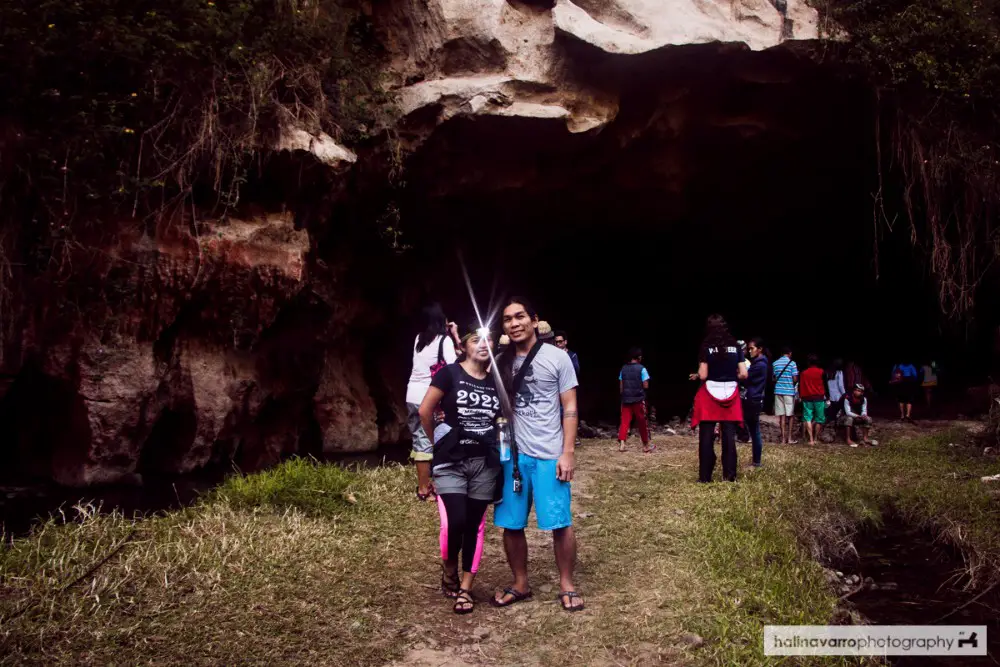
Is It Still Worth Visiting Sagada? (Our crowded trip to Sagada)
As our year-end trip, Hali and I joined a group tour on a 3-day Sagada-Maligcong trip. This is something I’d been looking forward to, since my friends had always recommended a trip to Sagada in Mountain Province.
Prior to our trip, I’d read about how Sagada had become a popular tourist attraction not only due to its cool climate and natural & cultural attractions but also due to influence of modern “hugot” media such as the movie That Thing Called Tadhana. Believe, I prepared myself but when we got there, I did not expect it to be THAT crowded.
Is it still worth visiting Sagada? Let’s find out. Here’s our short visit to Sagada in Mountain Province.
Contents
Our trip to Sagada
From Manila, we rode a private van to Mountain Province and arrived in the area early in the morning.
When we arrived to the main road in Sagada, one of the first things I noticed is that there were similar vans parked on one side, making it difficult for other vehicles to pass through. Our driver had a hard time driving to our accommodation and I could imagine an even harder time finding a parking spot for later.
I also noticed that there was a lot of buildings in construction, which I’m guessing are future commercial spaces and accommodation.
That saying, we were able to get off at our accommodation (Clairence’s Inn) to drop off our things. We then started our tour in Sagada.
Echo Valley and Hanging Coffins
Echo Valley is a nature trail where you can find the famous hanging coffins, as well as an underground river and Bokong Waterfall. Accordingly, it’s named as such because even a small whisper echoes in the mountains.
Echo Valley entails a long walk into the mountains. We passed by a cemetery, where a local guide explained how — contrary to popular customs — do not lit candles for the dead, but instead celebrate through the Panag-Apoy Festival.
Past the cemetery, we started the trek to the hanging coffins. There were too many tourists along the trail that it felt like queuing for a ride in a theme park. We frequently stopped to give way to all the people coming and going. Despite this, Hali and I enjoyed the view, with numerous pine trees and other thick flora.
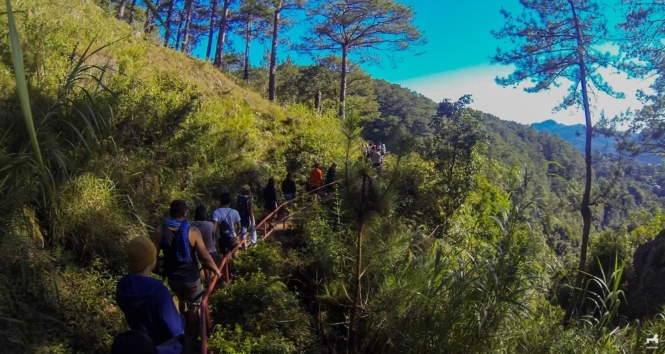
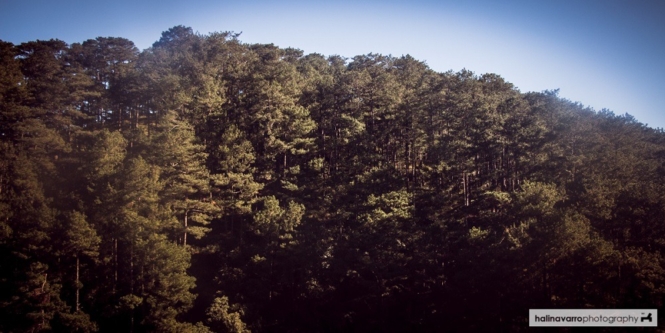
The Hanging Coffins is one of the most photographed spots in Sagada. It’s an odd burial customs that it’s even listed in international websites. According to our guide, in the old times, upper-class natives would place their dead in the hanging coffins up in the mountain walls as a symbol of their status. That is to say, they keep the dead up the ground, where poor people farm.
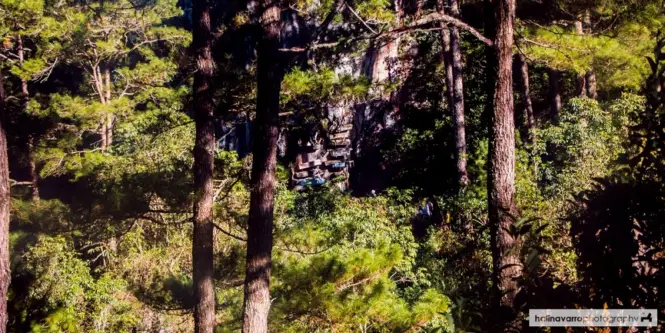
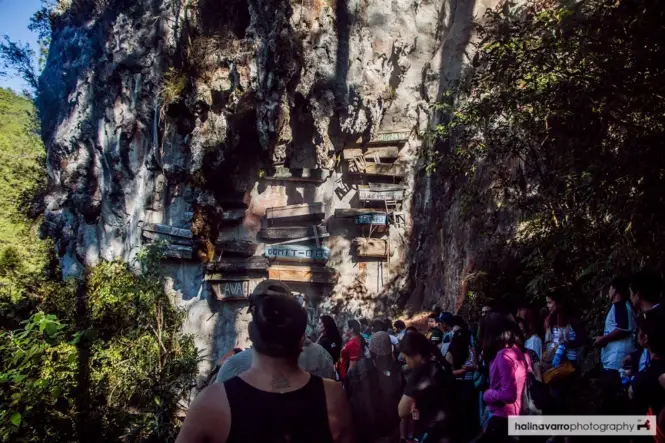
There is another set of hanging coffins in the mountain across this one, which is easy to miss unless someone points it out to you.
After listening to the local folklore, we continued trekking towards a nameless underground name. The cave has a tragic story. Several years ago it became the sewage system for housing and the smell was so strong the local government decided to close it for a few years. Our guide also told us about an Irish tourist who was found and rescued inside the cave. The story goes that the tourist was initially exploring the old coffins outside but fell through the ground, which turned out to be the underground cave’s ceilings. I asked our guide whether the tourist had broken bones when he was found. Our guide said, “No — his corpse was rescued.”
Anyway, that’s the background of the underground cave.
Flash forward to the present. With flashlights and headlights, we entered it and passed through a low river that went up to our shins. Most of the stalactites had been dead, but there were still a few glittering formations remaining.

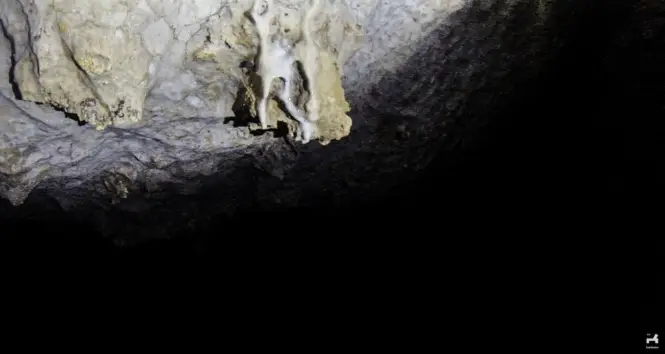
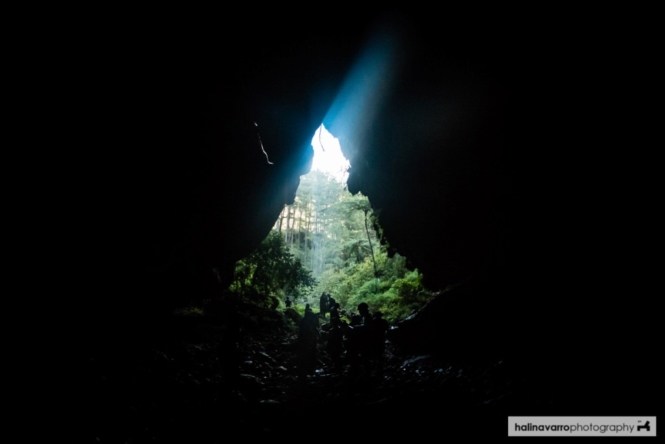
We exited the cave and followed the course of a river. The river was shallow, but the boulders were slippery. Two of our companions had their slippers broken, while some complained about their shoes getting wet.
The trail ended in Bokong Falls, with its two cascades of water. It is located beside an old shed, which used to be part of a funfair in the area. Up ahead Bokong Falls, there is an area filled with wild flowers, which I loved. It was already sunset when we started the painstaking walk back to our inn.
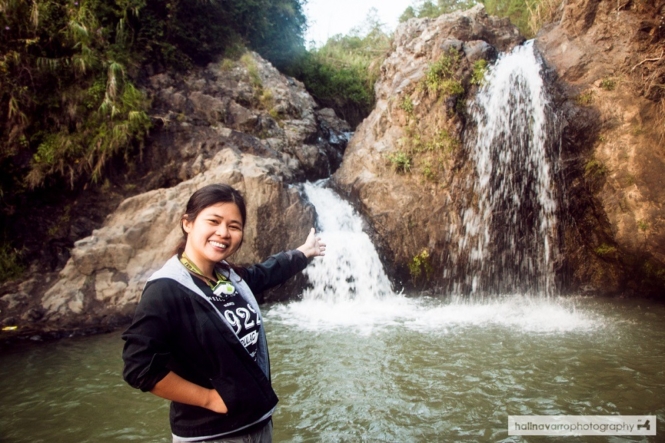
Based on our schedule, the trail should take 3 hours, but with the crowd and extra time for taking pictures, it took us 4 hours or over. Overall, it was a somewhat enjoyable activity.
Sunrise in Kiltepan viewpoint
One of the must-do’s in Sagada is seeing the sunrise in Mount Kiltepan. It’s a mountain offering a panoramic view of rice terraces and surrounding mountains, though for the locals it’s more popular for its sea of clouds (similar to Mount Pulag in Mountain Province).
We went to Kiltepan viewpoint early in the morning — along with around 200 people or more. I’m not good at estimating numbers, so there’s a chance the number is actually higher. It almost seemed like there was a rally up in the mountains.
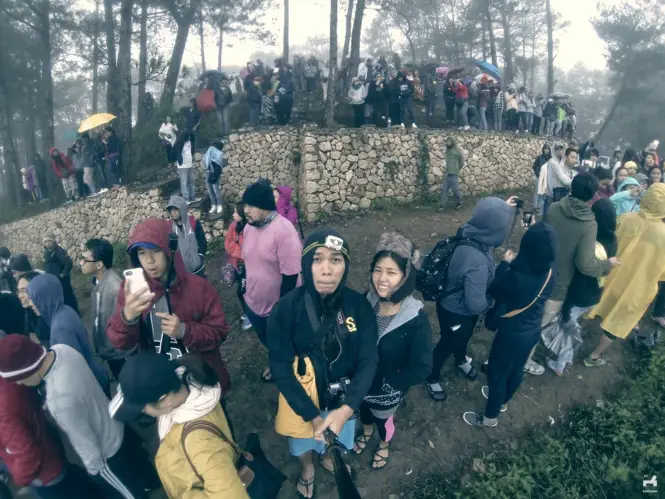
Anyway, it was rainy and cold. Most of the tourists were huddled in the cafe and the line for coffee was moving slowly. We found it difficult to find a decent spot to sit on.
Due to the weather, the sunrise wasn’t visible. Instead, we were greeted by a wide expanse of fog. In a way, the surrounding fog was eerily beautiful, although I would have loved to see Kiltepan’s famous sunrise as well.
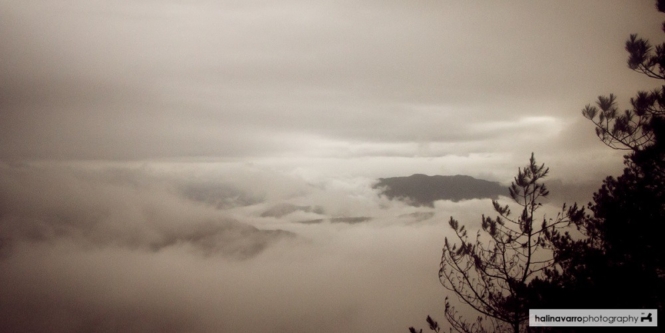
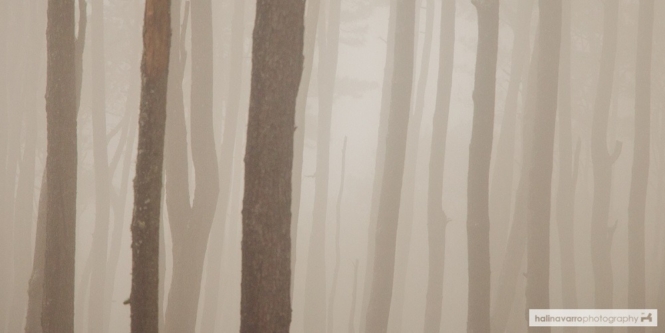
Trek to Bomod-Ok Falls
Bomod-Ok Falls is a 200-meter waterfall located in Banga-an, Sagada. It’s also called Big Falls because it’s bigger than Bokong Falls. From the jump-off point, it takes about 1-1.5 hour to reach the waterfall.
Our visit to Bomod-ok Falls is probably my favorite part of our short tour in Sagada. By morning, the weather had improved to a brighter day.
We first stopped in the briefing area, where the guides held an orientation and gave us walking sticks. The walking sticks are good supports particularly on the return trek. Throughout the trail, we enjoyed a view of beautiful rice terraces. Our hiking guide informed us that the rice produce is not sold but instead used for consumption by the locals.
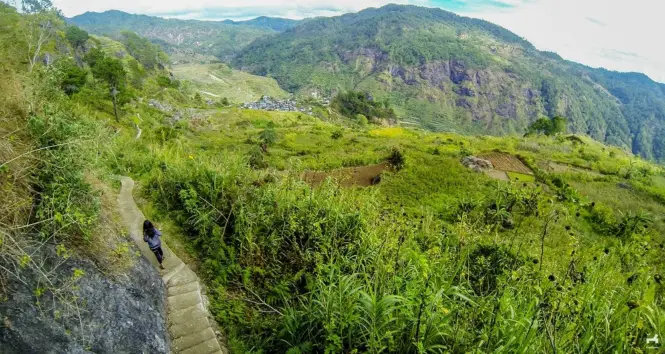
We went across the village and our guide pointed out items of interest, including a storage house for rice, an open house used for harvest rituals, and a tramline used to deliver harvests to the village.
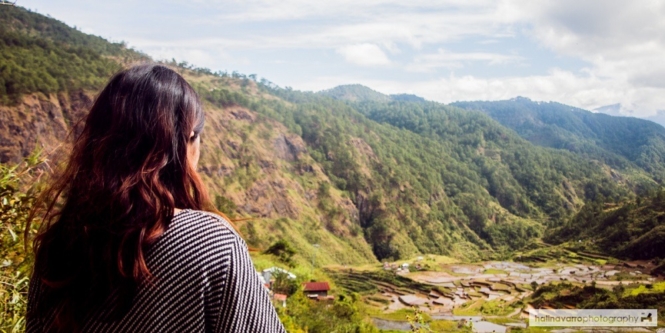
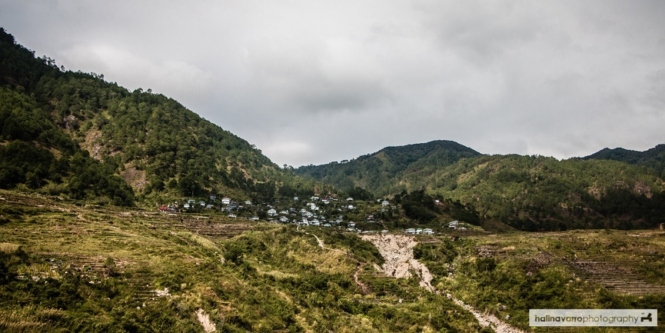
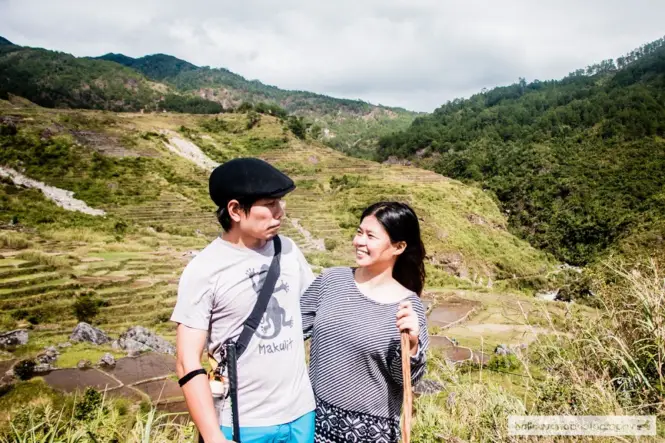
We passed by sunflowers planted alongside the trail. Our eyes were not left wanting of delightful things to see. Also, the trek to the waterfall was easy since it was going down — although going back up is a different story.
Bomod-Ok Falls is one of the most beautiful waterfalls I’ve seen. The cascade flows in a rage down to a basin, which was a deep green and very cold. Huge boulders contain the basin and leads to a gentle water trail that flows away from the waterfall.
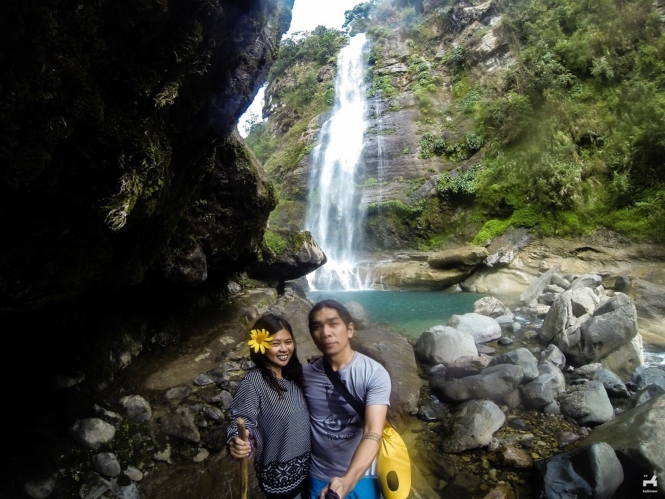
Hali wanted to take a swim, but we didn’t have enough time. So we simply stayed there to appreciate the waterfall and take photos.
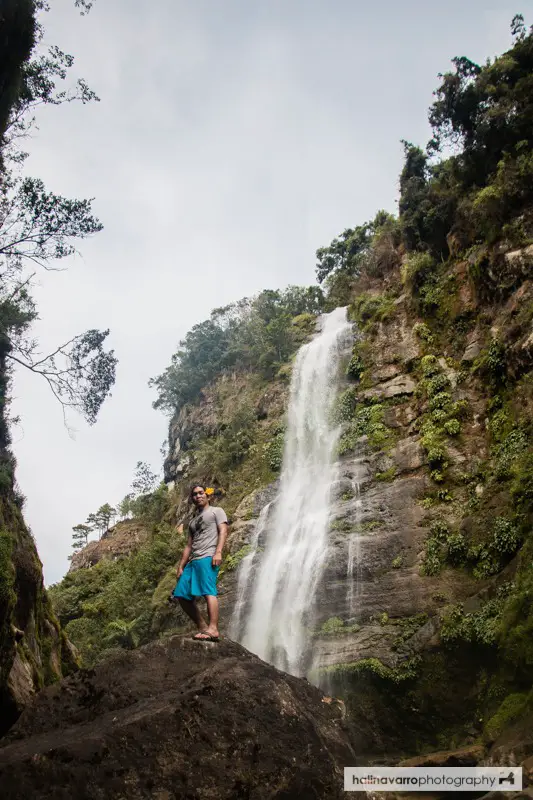
This was our last activity before proceeding to Maligcong, a quiet mountain village in Bontoc, Mountain Province.
What I think of Sagada: Is Sagada worth visiting?
First of all, let me say the obvious: We only spent a short time here. We probably need another day to see whether Sagada is truly worth the trip, but this is also enough time to know whether we liked it or not..
Sagada is a beautiful place — there is no denying that. It offers unique culture & traditions. In fact, I was hooked by the stories told by our guides. It also has amazing nature attractions such as mountains, rice terraces, caves, and waterfalls. It’s no wonder that it’s one of the most popular destinations in northern Luzon.
That saying, I truly didn’t expect it to be overly crowded. I’d seen my share of summer & holiday crowds, but sometimes I forget what it’s like to go in a popular tourist attraction. I remember a friend gushing about how Sagada is a good place for quietening the mind and soul searching, and I think it’s safe to say that that period is over.
I enjoyed our time in Sagada, but I was also put off with the overcrowding. So it’s a mixed bag for me. Will I go back here? I am open for another trip, but only if I’m sure we’ll have a different experience. After all, there is more to see in Sagada than the ones we’ve visited. Specifically, I’m looking forward to Suimaging Cave, which I’d been told offers a one-of-a-kind caving experience. Today though, I’m ready to head somewhere else a little quieter.
Before I end this post, here’s our year-ender video featuring Sagada-Maligcong! 🙂
How to Get to Sagada
Travel time from Manila to Sagada is about 12 hours.
There is a direct bus line from Manila to Sagada.
- Ride a Coda Lines overnight bus bound for Sagada. Coda Lines cane be found in HM Transport Cubao Terminal along EDSA south-bound. It has a daily schedule at 8PM, 9PM, 10PM, and 10:30PM. Fare is P760 (semi deluxe) and P980 (super deluxe) per person. Advanced booking is recommended for guaranteed seating.
Alternative routes include Banaue or Baguio.
- From Manila, ride a bus to Banaue. Then ride a van to Bontoc and then transfer to a van bound for Sagada.
- From Manila, ride a bus to Baguio. Then ride a bus to Sagada.
Will you recommend visiting Sagada? Why or why not? Let me know your thoughts in the comment section below.
Next Up: Mount Kupapey and Maligcong Rice Terraces.

Katherine Cortes is a long-time backpacker and a freelance writer/editor. She likes beaches, snorkeling trips, and relaxing staycations (preferably with bath tubs!).




2 Comments
Marichel
You should have tried the caving/spelunking in Sagada. It’s one of the exciting and most memorable part when we went there.
Katherine
Thanks for the suggestion, Marichel. 🙂 Onga daw maganda caving sa Sagada. Sayang we had limited time then. I actually like Sagada even though it was very crowded when we visited. Pati lemon pastries nila I love.